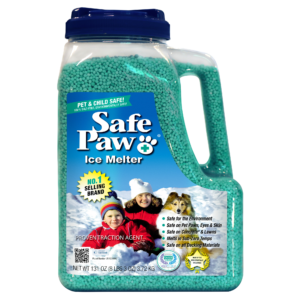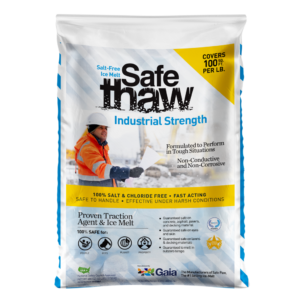How To Increase Traction On An Asphalt Driveway During Winter?

Winter has arrived, bringing harsh weather patterns detrimental to concrete and asphalt. Nevertheless, asphalt is a famous road and driveway paving material because of its simplicity of installation and extended lifespan. Bitumen, typically created during the oil refining process, holds aggregates together.
Asphalt is a rigid, water-resistant material that absorbs heat and light. Moisture, freezing temperatures, and oil or gasoline spills can influence traction on asphalt surfaces. But hazardous conditions and toxic chemicals can ruin your asphalt driveway. So, we need to keep our asphalt driveway secure while making it safe to walk on ice without slipping.
Driving on Black Ice
Driving on black ice is one of the trickiest winter challenges. This thin coating of glazed ice on the roadway is nearly transparent, causing the road’s surface to appear black and leading to unexpected slippery conditions. When driving on black ice, it’s vital to keep your speed low and avoid sudden braking or steering, as this could cause your vehicle to skid.
Tire Traction on Ice Driveway
Improving tire traction on ice driveway is crucial for safe winter driving. Winter tires can help as they are designed to provide better traction in snowy and icy conditions. However, even with winter tires, gaining traction on ice driveway can be challenging. So, how to get traction on tires?
Here Are Some Pointers For Increasing Traction On The Asphalt Driveway
- Traction Is Crucial
As per the weather prediction, you can use various products to offer traction before snow and ice develop. For example, to help you acquire more excellent footing, throw kitty litter, birdseed, or sawdust on top of the ice. Sand can also improve ice traction. But it must be cleaned up after usage to avoid clogging drains and run-off into plants and gardens. Same way, kitty litter can turn out to be a messy product.
The best way to get traction on any surface, including asphalt, without harming is an effective mineral-based traction agent. It’s disposable can is easy to carry and use. The natural ingredients absorb water and provide you grip for safe walking and driving. It works better than the walk-on ice grips for shoes as you don’t need to worry about size and fit.
- Get The Shovel Out
Shoveling is perhaps the most effective way to keep your driveway safe during icy weather. With this method, you won’t have to worry about damaging your pets, plants, rivers, or driveway. But it is a tiring and time-consuming task and should be avoided by the elderly and people with health issues.
- Sidewalks And Driveways That Are Heated
Electric heating coils under the asphalt in heated driveways and pathways or hydronic tubes are installed after pouring the concrete surface. These heating elements let you adjust the temperature to keep the walkway or driveway warm enough to prevent ice and snow from forming. However, an amenity like this necessitates a significant initial investment, including increased energy bills.
- Traction Strips and Alternatives to Melt Ice on Concrete
Driveway traction strips can also be a good option, providing an anti-skid surface that can help both pedestrians and vehicles maintain traction. When it comes to melting ice, chemical-based ice melts are often used, but they can be harmful to concrete and harmful if ingested by pets or children. A safer alternative to melt ice would be to use a product that is safe for the environment, pets, and children, like Safe Thaw, which is toxin-free and safe for concrete.
5 Tips For Keeping Your Asphalt Driveway In Good Shape
• Stay away from chemical deicing agents and rock salt-based products. Although they can swiftly melt ice, their corrosive properties can damage asphalt.
• Instead of using a metal snow shovel, use rubber blades. Metal shovels with a pointed tip should be avoided at all costs since they can damage your pavement.
• Be sure the blade of your shovel is set to the proper height. It can scrape the asphalt if it is too low.
• Make sure your driveway is adequately drained. To help with runoff, a two-inch strip of grass along the driveway’s border is typically helpful.
Get ready for winter with Walk On Ice instant traction on snow and ice
Conclusion
Always exercise caution when walking on slippery icy surfaces, regardless of the method used to remove the ice. Slow down and don’t rush. Be extremely cautious when turning or getting in and out of an automobile. Don’t carry too many things at once, and if railings are available, use them.
People use walk-on ice grips for shoes, but they need to be taken off while entering the building to avoid slips and falls. At the same time, natural traction agents can be used on any surface and at any time without any worries.
FAQs
Other Ice Melt Products
Safe Paw
The Original and the #1 Pet and Child Safe Ice Melt for over 20 years. Guaranteed environmentally safe – will not harm waterways and sensitive wetlands. Safe Paw can change how winter affects our planet.

Safe Thaw
Imagine an ice melt you can put down and never worry about. It won’t harm pets, kids and your property. That’s Safe Thaw. Unlike anything else on the market, Safe Thaw can change how winter affects our planet.



